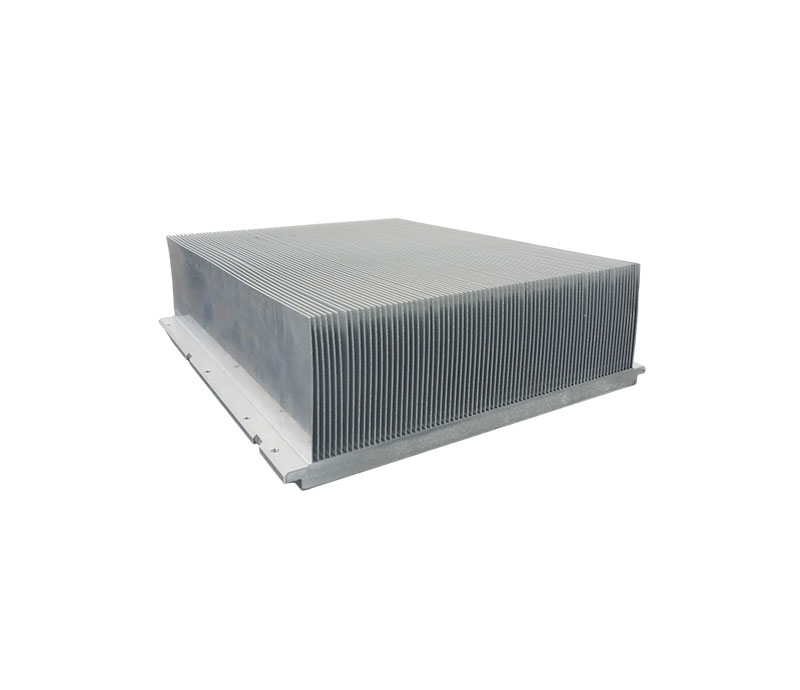Heat pipe radiator is a new type of radiator, which uses heat pipes to transfer heat from the high-temperature zone to the low-temperature zone, and then the heat is dissipated by a fan to achieve the purpose of cooling. The following will provide a detailed introduction to the basic principles of heat pipes, their structure, and the advantages of heat pipe radiators.
Basic Principles of Heat Pipe
Heat pipe is a device that utilizes liquid or gas as a heat transfer medium to achieve effective heat transfer. It is a device that uses metal or ceramic thin-walled circular tubes with a thick and fine three-dimensional microporous structure coated with adsorbent as the parent material, and is filled with clean gas or liquid. The basic principle is to use the vaporization and condensation processes of liquids or gases to achieve heat transfer.
When the heat pipe is in a horizontal state, when one end of the heat pipe is heated, the liquid in that end becomes a gas, generating high pressure. Under the action of inertia, the gas moves towards the low pressure end, generating a large amount of heat in contact with the condensation adhesive from the condenser at the low temperature end in the heat conduction core, thereby transferring from one end of the heat pipe to the other end.
Heat pipe structure
A heat pipe is composed of a shell, a capillary tube, a partition board, an adhesive, and a working fluid. The following will introduce the functions of each component one by one:

1. Shell
The shell of a heat pipe is usually made of copper or aluminum, and its main function is to fix the thermal conductivity core and protect the device, while also sealing the fluid.
2. Thermal conductivity core
The thermal conductivity core is the core part of a heat pipe, which is usually made of high thermal conductivity materials such as ceramic or metal thin-walled pipes, and has excellent thermal conductivity. The inner wall of the thermal conductivity core is coated with a layer of adhesive. After applying the adhesive to the inner wall of the matrix, a coating can be formed after annealing, forming a capillary structure.
3. Capillary tube
Capillary tubes are formed by coating an adhesive on the surface of a thermal conductive core, which can transfer liquids from the low temperature zone to the high temperature zone. Adhesives are usually fibers of metal or ceramic, coated on the surface of the thermal conductive core, with a small distance between them, resulting in the action of surface tension, which keeps the fluid in tiny pores, forming a capillary.
4. Partition board
The partition board serves as a barrier for fluid and thermal conductive materials in the heat pipe. Usually made of non thermal insulation material to prevent heat loss.
5. Adhesives
Adhesive is a coating used to coat the matrix into a capillary structure, usually using the same adhesive and thermal conductive material.
6. Working fluid
The working fluid is the medium that transfers heat inside the heat pipe, usually using low boiling liquids such as ethanol, n-pentane, etc.
Advantages of heat pipe radiators
Compared to traditional radiators, heat pipe radiators have many advantages:
1. Effective heat transfer
The heat dissipation efficiency of heat pipe radiators is higher than that of traditional copper aluminum radiators because their heat transfer is faster and more uniform, resulting in better heat dissipation effect.
2. Lightweight
The volume of heat pipe radiators is smaller and lighter than traditional radiators, thereby saving material and logistics costs.
3. Lower noise
Due to the finer internal structure and more uniform heat transfer of the heat pipe radiator, its noise during operation is lower.
4. Higher reliability
Heat pipe radiators do not have easily worn parts such as fans and fins that are traditional radiators. It adopts an unpowered cooling method and does not require a power interface or control circuit, making it more reliable in use.
summary
Heat pipe radiator is a new type of radiator that uses heat pipes to transfer heat and achieve cooling effect. It has the advantages of effective heat transfer, lightweight, lower noise, and higher reliability. With the continuous development of technology, heat pipe radiators will be widely used in fields such as computers, electronics, and energy.